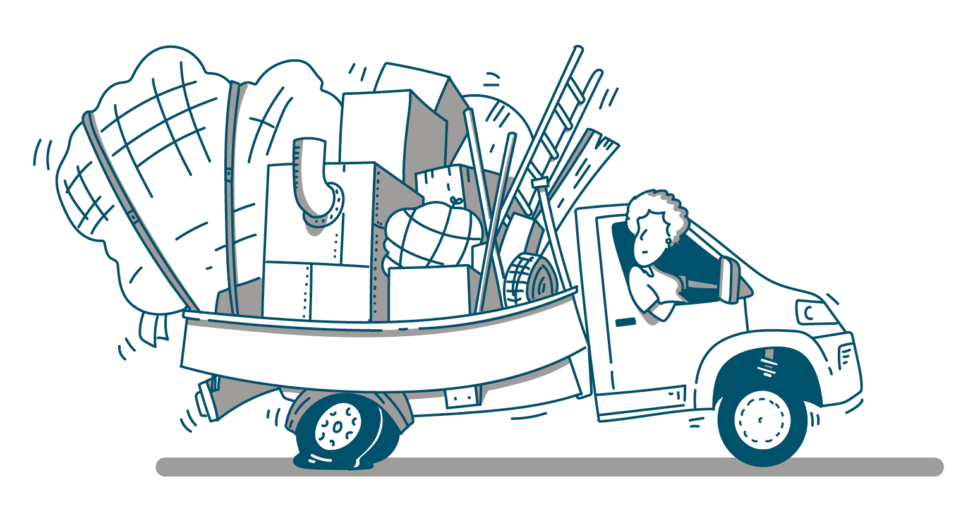Check what you know
Did you know?
Best practice tips
Check what you know
Did you know?
- A driver can be fined up to £300 or get a court summons if their van exceeds its maximum permitted axle weight.
- Exceeding the manufacturer’s load limit can put serious strain on the vehicle and may invalidate insurance cover.
- Overloaded vans are a common issue in the UK, 89% of vans stopped by DVSA are overloaded.
When loading a van, it is not the size of the boxes/load or how full the van is that matters – it is the weight of the boxes/load and where they are placed that is important.
A driver should not exceed their van’s legal maximum loaded weight.
If the vehicle is overloaded to the point where it is a hazard to other road users, the driver can be charged with dangerous driving and the offence may carry a prison sentence.
Best practice tips

- Drivers should know their van’s axle weights as it is extremely important that any load is distributed correctly across both axles.
- Each axle has a weight limit. If the vehicle exceeds either front or rear axle weights, it is breaking the law.
- Drivers should regularly get their van weighed at a local weighbridge.
A van has a ‘gross vehicle weight (GVW)’ or ‘maximum authorised mass’ (MAM) which can be found on the VIN plate. This is the maximum weight that a van is legally allowed to weigh when loaded. It includes: the van, the fuel, the driver and any passengers and any load being carried. It will be listed in the owner’s manual and is normally shown on a manufacturer’s plate or sticker fitted to the vehicle. The position of the plate does vary but the most common location is inside the front door panel.
The ‘payload’ is any load carried by a vehicle. It is the total weight of what a driver can safely load into the van and includes all passengers, luggage, tools, etc.
A van’s performance and safety will be affected when a driver overloads it or its individual axles.
Calculate your payload
To calculate a payload while staying within the legal GVW limit, drivers can do a simple calculation by subtracting the van’s unladen weight from the van’s gross vehicle weight (GVW). An example of this would be;
GVW of 3500kg minus the unladen weight of 2210kg
= a payload of 1290kg.
Categories


Crown Copyright 2025
You may re-use this information (not including logos) free of charge in any format or medium, under the terms of the Open Government Licence.
To view this licence, visit www.nationalarchives.gov.uk/doc/open-government-licence